State Of Architecture And Top Challenges Faced By Builders And Architects In India
Indian Construction Industry: Overview & Prospects
Infra’ sector is a key driver for the Indian economy. It includes power, bridges, dams, roads & urban Infra’ development. The sector is highly responsible for propelling India’s overall development & enjoys intense focus from Govt’ for initiating policies that would ensure time-bound creation of world class Infra’ in the country. In 2016, India jumped 19 places in World Bank’s LPI 2016, to rank 35th amongst 160 countries. FDI received in Construction Development sector from Apr’00 to Dec’17 stood at US$ 24.67 bn, according to the DIPP. Logistics sector in India is expected to increase at a CAGR of 10.5%, from US$ 160 bn in 2017 to US$ 215 bn by 2020. India has a requirement of investment worth Rs 50 trillion in Infra’ by 2022 to have sustainable development in the country. India is witnessing significant interest from int’l investors in the Infra’ space. A report from market research firm Trimetric predicts the sector will grow at a CAGR of 4.16% from now until 2021. This is an increase over market growth seen in the previous report period, 2012-16, where the Indian construction industry expanded by 3.95%. India is one of the world’s most vibrant markets for building & interiors at the moment. Huge sums are being poured into a comprehensive range of construction projects, from major Infra’ upgrades, sweeping residential housing programs & wholesale city building. Residential construction is definitely a market to watch in India right now. India is facing a huge housing backlog - some estimates claim as many as 30 mn families need homes to try & tackle the ever-expanding need for affordable housing, the govt’ is planning on building 20 mn low cost units by 2022. Rapid urbanization is necessitating the construction of modern, convenient transport links to & from major population centres. This means India is funneling cash into areas such as road building. This sub-sector alone is expected to see $13 bn of investment over the coming years. As much as 7,000 km of new roads are planned for construction, linking the East & West of India. Under the Smart City Mission, govt’ plans to develop Infra’ of 100 selected cities with an investment $7.2 bn, whereas under the AMRUT scheme it plans to spend $7.4 bn to develop 500 cities by 2022. In short, it’s a good time to get into construction in India. It’s been on the international radar for some time now, with many foreign CoS making some big wins on the market. Malaysian & Indian CoS inked deals worth $36 bn in early Apr’17.
Increase in the population will bring a huge future for the construction industry. It is being forecasted that the global population will be 9 bn by 2050. By this time majority of the population will be living in the cities. This will be highest demand of construction yet to be faced. The construction industry is one of the largest industries worldwide that have to face different aspects of challenges & issues to maintain their significant growth. With the increase in demand in the field of construction, there come challenges in performance, profit, productivity, sustainability, labor & the total industrial growth. Outside of the construction sector, India’s building activity is providing some different entry routes. Transport & logistics operators are also getting in on the action. There is heavy demand for construction equip. Sectors such as roads, airports, power, & seaports have become very attractive for both domestic & foreign investors. With many points of entry, India’s construction industry offers a wealth of opportunities for international CoS over the next decade. The ACETECH series of shows, dedicated to architecture, interior design & interiors, puts international firms in contact with India’s key buyers whilst World Build India offers a dedicated event to the building, construction & architecture industries. India’s construction industry is expected to continue to grow at strong rates over the next decade, according to a recent research note from BMI Research. Growth will be underpinned by stable govt’ support for Infra’ development, as well as expanded pvt. sector involvement. We have a positive outlook for India’s construction industry & expect that growth over the next decade will draw upon increasing govt’ & pvt.-sector investments in Infra’ development, & resident & non-residential building. Govt’ support is exemplified in expansionary budgetary allocations for Infra’ projects & in regulatory reforms that are opening new sectors to pvt. involvement & investment. According to BMI Research, India’s construction industry will see growth of 6.1% in 2018 – an increase on the 5% growth experienced in 2017, which was impacted by govt’s program of demonetization. Real growth will average 6.2% between 2018-27. Strong economic growth in India will also provide support for construction investment. BMI Research recently revised its forecast for GDP growth in this FY from 6.7-7.3%.
State of Architecture in India
Today, the rapidly-developing country of India is one of the key places in the world where architecture could have the most impact; in spite of this, there has been little critical reflection on the country’s architectural landscape, & architecture has struggled to assert its value to the wider population. Looking back to the time architectural practices first began to proliferate in India, one sees that they always operated within an ecosystem of practice, academia, & association. We can trace this to the 1930s, when the Indian Institute of Architects (IIA) was set up, which in turn emerged from the alumni of the Bombay School of Art. Teachers at the school were the most prolific practitioners in the country, & students made the easy transition from learning to apprenticeship, to setting up their own practices. Even patrons, largely non-state aligned themselves with the architects in a collegial association. The Journal of the Indian Institute of Architects & their annual lectures became the mouthpieces of collective praxis, as the many presidential speeches show. Everyone knew what everyone else was doing, knowledge flowed centripetally. In the years after independence, these bonds became looser as the nation-state became the chief patron. While pvt. wealth & industry provided steady work for architects all over the country; the IIA still continued to remain the platform of discourse & dissemination; an internal professional rumination, largely distanced from changing politics & culture in the country, especially from the 70s onwards. While students of architecture did briefly take political stances during the Emergency, practice remained unaffected.
By the end of the 80’s, with the rise of the patron as aspirant or speculator, and, a few years later with the effects of liberalization made flesh, the erstwhile associations started to crumble, the ecosystem became unstable, & in some ways, unsustainable. Architectural practices became myriad & diffuse, working centrifugally, aligning into various smaller constellations. The influence of the IIA waned, while the Council of Architecture, mandated to look after the concerns of practice in the early seventies through an Act of Parliament, by & large, came to focus on monitoring architectural education that had, by the turn of the millennium, boomed with colleges springing up in all parts of the country. Education too, dispersed in the wake of overarching Modernism’s eclipse & the acceptance of pluralism fueled both by the rise of critical theoretical positions in architecture as well as a dilution of the rigor that functionalism once imposed on its practitioners. Critical discussions on Indian architecture have since been restricted to a few conferences & the odd polemic in architecture magazines. Books on Indian architecture, when concentrating on the contemporary, are in the form of monographs, vanity publications or, when serious, about urban change. Vistara, the exhibition, in 1986 was comprehensive, but an overview of Indian architecture. Three decades on, there has been no serious review of the state of the architectural profession in India.
The first is clearly to correct or compensate for the absolute silence in the discussion of architecture in the last decade or two. For good reason, our discussions & our focus have been on urban questions, or at least we have approached our discussion about architecture through the lens of the city. Further, the architecture that has been celebrated in India since the liberalization of our economy has been the architecture of indulgence. While this is productive in its own way; it removes the perception of the usefulness of architecture away from the public. All such programs that, while they are crucial crucibles for architectural innovation, touch a very small fragment of our population. Lastly, in India, the State has more or less given up the responsibility of projecting an idea of India through the built & physical environment as it had done in the post-independence era when several state capitals, govt’ & educational campuses were built across the country. Today the major state-directed projects are highways, flyovers, airports, telecommunications networks & electricity grids which connect urban centers but don’t contribute to determining or guiding their physical structure. The State is now obsessed with a statistical architecture – GDP, etc. Architecture is largely being driven by patrons & the voice of the architect, at least as we see it, is muted; far too muted, sadly so. Since the liberalization of our economy, architects are pandering to Capital in unprecedented ways; creating what we could call the Architecture of Impatient Capital. Capital on account of its impatience creates architecture that is often whimsical, most often vendor driven, for ease of speed of construction, with new roles emerging for architects who now interface with technology but also exchange & access info. in a renewed relationship, sometimes productively & often in a subservient way. This then, by extension, is a critical issue for practitioners – the ideological stance of most patrons, which is largely based on & invested in Capitalisms. Interestingly, in today’s world no ideological stance can be singular or clear. Through the last 25 years we have the simultaneous experience of transitioning out of socialism & transitioning, simultaneously into capitalism. Thus there have been other patrons, trusts, faith-based organizations, NGOs & civil society more broadly that has also supported architecture & recognized its role in the well-being of society. We hope we can celebrate this other half of architectural production in India that is, equally or if not in greater measure, altering & making the “new landscape.” If the developer is playing a role in the building of our architectural physical fabric, then we will have to see where & how we can engage with that set of players. Real-estate is as much about planning, policy, & culture as much as it is economic & finance – this reality has to be elaborated, researched & explained, while as a profession we have to negotiate these forces for the larger good of our built & natural environments.
Architectural education has a massive role to play in articulating & negotiating these conditions. Building appropriate capacity & training a generation in the various modes of engagement with practice, etc. But the media more generally must also make this more central to its imagination & agenda. We don’t see enough of this discussion in the mainstream media in these critical terms. The precise problem is that architecture is floating in murky waters, that is indeed its “state” – fluid & ambiguous! From a point in the early twentieth century when architects fought to stand apart from engineers, & projected themselves as designers & thinkers, participating in the cultural landscape of society, today architecture has slipped into modes of luxury or vanity commodity – pretty houses & rich interiors! Today architects are introduced as lifestyle-producers – handmaidens to a demand for style & fancy living! This condition was the urge behind setting up tents whenever & wherever possible to discuss architecture. Lack of valuable & critical discussions on architecture & the simultaneous pressure on urban development resulted in discussing architecture as an aspect of urban studies or regional/ rural studies to perhaps symbolically embrace the social sciences & their humanizing effects. But then, what does it mean to bring architecture back into focus – & how would we study this object-space which it is, as well as occupies? In framing programming at Arbour: Research Initiatives in Architecture or the editorial intentions within Domus India, one struggled on experiments to develop the tools & system of understanding, analyzing, & discussing architecture, & whenever necessary, to understand architecture in India! It is now important that we stand within today & talk about today! We have to discuss our times as our experiences of political realities in everyday life – & here we draw in architecture, as one of the primary modes in which everyday life is lived & experienced. The production & consumption of architecture, as function or symbol, it is an everyday lived reality. The task is then to produce tools that will understand architecture as a material reality as much as it is a cultural topography.
We don’t believe any time is right but different distances from the present give you different readings. This is also why we have consciously constructed a curatorial team that brings different pulses to our readings – one of an art critic, architectural critic as well as a practitioner. We bring different lenses to view the trajectory of architecture in India & our perspectives will offer different readings of time & distance. Each of these lenses is inherently better equipped for different distances! Besides this multiplicity of curatorial lenses, we believe the structure of the exhibition moves from an objectivity of presentation in the first section to a subjectivities reading or curatorial reading in the third section. The second section is a bridge from where we can look at the past with some distance. As a generation passes it becomes in some ways easier to read the immediate past, while in other ways harder because even for the immediate past we do not have an adequate culture to archive, capture & reflect on the production of architecture. So the chronological proximity can be used in both ways – to construct robust links & a sense of the continuity with the past but also to interrogate it with the ambiguity that the proximity to reality allows us. In the first few decades after independence there seemed to be a synchronicity between the aims of the architects & that of the fledgling nation state. Even pvt. Patronage seemed to follow a similar mindset. Now in the liberalized present, there seems to be a greater priority on the rights of individuals rather than on collective responsibility especially in the urban environment. This transition in the nature & role of architecture in India clearly reflects the arc of political change in the country, from the primacy of the State as engine of social, economic & cultural transformation in the early decades after Independence to the gradual withdrawal of the State from this dirigisme position & the emergence of pvt. capital as the source & reference point for the formation of social values, the direction of economic policy & the texture of cultural production.
In the earlier phase, architecture was clearly aligned with the Utopian, nation-building ambitions of the postcolonial State, whether the patron was the State or pvt. enterprise. In the current phase, architecture is equally clearly aligned with the aspirations of an emergent class of financiers, speculators & investors, with the State often following this cue in any projects it commissions. The premise of the earlier phase was the Leviathan-like delegation of decision-making by individuals & communities to the postcolonial State, which would guarantee the greater good. The premise of the current phase is the contrarian equation of individual liberty with pvt. property, & thus with the individual quest for personal happiness, with the greater good falling by the wayside. There is a difference in the geographies of the location of the new patronage that has emerged. There is an explosive growth of building in the southern states of India. The traditions & cultures of building in these new geographies is very different from the contemporary building culture. Interestingly this new form of patronage comes in a post-socialist era where the individual is at the center of the decision-making through an empowerment that is the result of capital accumulation. So this is a new form of patronage but also coming out of specific cultural & physical geographies. The globalized economy operates through a complex circulation of global goods, services & imaginaries that are threaded through a local set of conditions: the relationship between these is parsed through a variety of modes including translation, mistranslation, reflection & refraction. Urban sphere that is thus produced is characterized by inchoate & often volatile aspirations, a pursuit of images that seem always out of reach, & also a culture that emphasizes the primacy of privatism rather than solidarities of any kind.
There are some wonderful trends within the profession that are becoming evident, a new set of architectural practices have emerged, & have established a critical body of work that can be evaluated for their different ideas & theoretical perspectives. At the same time, today change occurs at an escalated pace – & to understand the present & future trajectories for the profession we need to build conversations that can facilitate this process. A nuanced, critical, robust & rigorous discourse within the academy of architecture education & more importantly the profession – we sincerely hope that SOA will be a contribution to this broader aspiration. Writing on architecture is in an abysmal state! But this statement does not take us far. Lack of writing indicates our lack of critical interest in architecture as a professional community, as a culture. To theorize a subject for a field is to indeed appreciate its value & existence beyond its mere need-to-be; & the discussions on architecture have happily slipped into rhetoric’s of regionalism or climate, hate-glass or love-brick & stone, outdated notes on power & architecture – in fact, they seem to be living in a time-warp! The world changed drastically & rapidly in the 1990s – & we could not as an architectural profession keep pace with it – unable to understand what had hit us. Rather than developing newer languages & idioms, & tools to asses & read the new architectural turns, we often resorted to a denial of the shape of things, to a rhetoric of rejection, & misplaced nostalgia. Politics has become ever more complex, & architects from once being agents of social & aesthetic revolutions, now maintain a technocratic attitude, where you fine-tune your skills, but avoid addressing the very environment (social & cultural) that you ironically depend on for your daily bread & butter! Until we address the conditions of our reality, writing will not be effective or incisive – because the drive to write, argue, shape/unshape will be missing! To write is to create a world that furthers the meaning & role of architecture in a society. It should not be imagined as a skill task of decoding some hidden meaning in an existing building; it is not supplementary to architecture, or to deliver formulas for a “better” design – but to enlarge the existing space & terrain of architecture productively.
As an ideological position, the early Modernists could willfully reject history in the course of charting architectural futures. However, considering that a lot of buildings are part of brownfield developments, often in the heart of some of our ageing cities. Both positions are a problem – excessive sensitivity to a past or a denial/rejection of it – & that somewhere is our situation today, to be oscillating between two positions. Some of the interpretations of the past have also been problematic – where often past is reduced to a monolithic imagination or simply a set of images, to be cut-and-pasted. To the credit of many architects – some in the generation that established studios in the 1970s as well as the younger ones establishing studios between 1980-1990s there has been an expression of this dilemma – where do I address the present time & its own material reality, while also caring about a history & heritage we grow up to respect; at times this has been a dilemma & it has been evident in the architecture, at times it is purposeful expression of that struggle. The need is to struggle in these times & see what languages of architecture will work for us today & suit or challenge our political & functional existences. Some of the younger practices are indeed doing that; they may not be able to express that all points in time, but they are intuitively struggling with the present.
There is also the shameless activity of building – which is more the real-estate end of architecture – where you binge on building & construction, where architecture is used to suit greed & some promoted idea of aspirations. Architecture in this realm can only be countered when some well-meaning & ethically-sound architects will enter this sphere of real-estate architecture, & try to push the boundaries from within these specific practices. On the other hand, one will have to work on the idea of public awareness regarding architecture. There is no discussion on architecture in non-professional forums, or the popular media; this is a big lacunae! Architecture is the most public of all arts – it sits in your face – it has a strong public presence in everyday living space – but there is no discussion on architecture in the public sphere. Indian architecture certainly articulated a politics of rupture & compelling forward movement in its heroic Modernist phase, when it presented itself as a force that would clear away the residues of tradition & the compromises of the colonial period, & would, both literally & figuratively, build a future for the nation-state that had no precedent in what went before. Even when they used motifs & devices, or redeployed typologies from the legacies of previous times, Habib Rahman, Achyut Kanvinde, B V Doshi, Charles Correa & Raj Rewal embodied this spirit in their early work. & when some members of this generation circled back to the retrieval of the embedded wisdom of regional building, architectural & visionary lineages, as they did during the 1980s, that was a political gesture as well – a gesture articulating a politics of critical retrieval.
Having said that, in many architectural projects today, one can feel the struggle some architects are going through with this divorce of form, design, & politics. What we need is not to mourn this divorce but to try & figure out what is the current engagement that form & design have with everyday life politics & culture. There are many formulaic references established about people & public life, living & working, & often architects are simply reusing them again & again. These are no more than rhetoric. However in some cases there are new adjustments being made, to deal with the political & cultural negotiations of life in India now. It is probably more writing, more studies that will make these new forms of anxiety clear & understandable. All the Modernists who believed that good architecture – or noble art – would inevitably lead to a good society have come to grief. Mondrian believed that his rectilinear, flattened paintings offered cues to the spiritual refinement of life; mass culture has reduced them to shower curtains. Le Corbusier believed that his ideal designs would enable the citizens of tomorrow to lead lives of significance; his work was flawed from the beginning by his desire to subjugate all individual will & desire to the absolutism of the plan. There is no necessary connection between good architecture & a good society – at best, the former can be an image of the latter; it can gesture towards the latter. But the best architecture can be distorted by elites bent on exacerbating the asymmetries in society.
To cut down on energy use, save money & make an impact on the environment, architects today are embracing green as their new way of life. While there is awareness on the importance of environmentally responsible & resource-efficient way of living, experts believe that it is much more important to promote a healthy environment, which does not disrupt the natural resources around us. We need environmentally responsible & resource efficient green buildings for a sustainable tomorrow. It’s time we encourage architects focused on designing green buildings. By adopting greener practices, we can take maximum advantage of environmental & economic performance. In India, the sustainable movement has gathered pace after the sector started focusing on affordable homes for ordinary citizens. In the current scenario, affordable homes in the range of Rs 20-30 lakh are the most sought after. To address this growing industry & govt’ interest, housing CoS are in the process of evolving norms for affordable homes & a specific rating system. In days to come, most architects, builders & developers plan to rebuild homes & make certain green changes to every home & ensure that they can create a sustainable lifestyle. By making few small changes one can cut down on energy usage, save money, & make a big impact on the environment. Challenges faced by Construction Industry Productivity within the construction industries over the past 50 years are remaining in a stagnant situation. The entry into a construction industry is not difficult that this marketplace is highly saturated at current situation. Competition is the main factor behind such saturation that will shrink the profit margin to a large extent. This stagnant situation will cause stagnant productivity. 63 % of the labor time is employed for waiting for the materials, traveling to area, waiting for equip., breaks, & works on planning to do certain activity. Hence the construction CoS end up between the shrinking profit margins & the productivity stagnation without generating any appreciable profit. Each year the demand for the construction projects are increasing. This also brings new & complicated design which is a big challenge for the construction industry. So, the construction firms must be choosy about the project they select. This is done by analyzing their regular pace of working & completion. Committing too many projects brings difficulty in completion & large loss. This result in dropping profit & prestige of the company easily form your hands. With the increase in the complex nature of the project, the opportunities for construction will grow. For CoS that move in thin profit margins, it becomes difficult to keep up with the increase in complexity of the project. As per the Accenture study conducted, only 30% of the largest projects in the industry are completed & delivered as per the budget signed. & the rate of projects that are completed on time are 15%. The ethics & the set of skills that is followed by a new generation will be very different from the past generations. These differences existing in a construction firm may result in certain opinion conflicts & issues of communication gap. The construction industry has been undergoing continuous growth for the past few years & it is continuing to show large growth. But the construction contractors have the remark that they find it difficult to get qualified workers & employees for doing specific construction works. This is due to the misalignment that is raised between the number of skilled labors that are available & the number job available. This is one of the biggest issue faced at present. This construction issue requires the organization or the construction company to spend & invest on training the people for required jobs along with a provision of additional pay. Studies & opinions taken from the site engineers & the contractors say that the lack of having inexperienced labors & workers gives rise of huge safety issues. Any issue or a problem faced in the construction industry due to some error or mistake is mainly due to the breakdown of the communication between the concerned parties of the project. If everybody in a project is communicated in & all about the project about the planning details, investigation details, doubts & clarifications, permission for work commencement, a huge issue due to a small error can be avoided easily.
Whatever be the size of the project, there comes an issue with sub-contractors if the work is not delivered in proper hands. This is a big problem faced by most of the main contractors. The only advice to such issues is to study about the sub-contractor before the work delivery. The opinion or suggestion about a sub-contractor can be asked to a manufacturing dealer or any other sub-contractor who you have worked with before or check the details & license of the sub-contractor & proceed with the work. It is very necessary to check whether the sub-contractor possess general liability insurance. Development of new technologies has completely transformed the construction industry. As the competition increases, more workers & competing projects are attracted. Some of the essential construction technologies are the integrated collaboration, mobile project management, & the cloud-based software. Special care has to be taken by the company while introducing the new technologies that it must not let down the workers who are working there in the traditional way. So, the introduction & implementation of new methods & ideas have to done slowly & under a steady condition. This patience can help in attaining greater benefits & the blowback from the employees will be minimized. This year & coming years will bring more of Building Information modeling, virtual reality, & laser scanning technology in the construction firms rapidly. Now, these technologies are becoming economical & affordable by the construction firms. The initial investment of these is bit higher, but in long run, the company will save money.
Among all the industries, the construction industries are the greatest consumer of raw materials. The industry account for 20-40% of the carbon emissions. This reveals that such a consumption of resources is not ought to be sustainable bringing the environment to great risk. Two main challenges for the construction industry in environmental point of view are the climatic changes & the water management. The construction industries mainly in China & India are facing a great challenge to reduce the carbon dioxide emissions to a safe level. The method of smart planning & design based on sustainability will help in the reducing the energy consumption & the pollution caused to a large extent. But this will demand for a new approach in the field of project management. We all know that the construction work is not always smooth & perfect. If a mistake is observed, many fingers will be pointing towards each other; i.e. contractors will blame the sub-contractors, the owner will blame the contractor, the engineer blames the owner etc. Such situations must be faced by considering the builder’s risk policy. This type of insurance will help in covering the project & any principle works that is to be done on it. The issues that can come under such policy is the building disruption due to environmental disasters or due to theft or vandalism
Challenges faced by Reatly CoS in India
Housing remains & continues to be the most lucrative investment opportunity known to Indians over the last three to four decades. Investments in housing sector are witnessing an unprecedented growth with suburbs & rural pockets gaining prominence to suit the requirement of varied investors. Real Estate CoS is going all out to gain a slice of the opportunities available in the suburbs & outskirts. The RE CoS through marketing efforts are extending many facilities to tap investors to invest in their ambitious projects. Now, it is imperative to understand the nuances of the RE industry from the Developers perspective. The high risk of default in handing over possession of the units to the investors has become a major cause for concern for buyers. Builders with excellent reputation of meeting commitments are performing relatively better than the rest in the pack. Delay in handing over of projects on time has led to a poor demand in recent times & thus the inventory of the developers is piling up & causing great unrest in the builder community. Banks are vary of extending loans as some of the builders have come on the black list of the banks & now banks are forced to classify the loans as non-performing assets. Numerous litigation’s have been filed against developers by Bankers, the Investors & by the Creditor community. These litigation’s have made matters worse for the investors. Deadlock in the construction activity has become a major issue for every investor as their funds have got blocked & the handing over of the possession has been postponed indefinitely, leaving investors in a dire situation.
Land being the most crucial aspect of all projects, the first concern for every developer is to ensure that the title certificates of the land parcels on which development is to be undertaken is clear from any & all defects with respect to the title. This will ensure that the development activity can be taken up with no apprehensions in respect to the ownership of the particular land under consideration. Solicitors & Advocates, along with the assistance of search clerks carry out search of the land for over 60 years to satisfy themselves as to whether the title is free from defect. Review of Title Certificate may come across as a simple task for a common man. This is by far one of the most difficult aspects of a Real Estate transaction. Numerous decisions by various High Courts & Supreme Courts have only raised red flags about defective title certificate. Thus, Solicitors, Search Clerks, Banks, Financial Institutions etc. thoroughly inspect revenue records & also circulate public notice to get a comfort on the title certificate After complete satisfaction of the title certificate, review of court orders, if any, Developers & the prospective buyers decide to go ahead or skip the investment in the project. The law in India does not require any Developer to issue Public Notice for carrying out development work on a particular land. However, it is considered as a good practice by RE Developers to issue a Public Notice & call for objections, if any from third parties & from parties who purport to have interest in the said land parcels.
The challenge here is, even if there are no oppositions received after the expiry of the time frame mentioned in the Public Notice, the Developer cannot prohibit the claims made by a third party claiming any interest in the said property. Chances are that this aspect may get into litigation between the Developer & the opposing party. No price for guessing, the project may only tank or get delayed if these issues are not resolved. Mumbai is amongst the most fertile ground for development of RE. However, land being a scarce resource & considering the topography of Mumbai, RE Developers have made a conscious decision to set up projects in the outskirts/suburbs & rural areas. RE Developers have begun to earmark their funds only for projects which are lucrative. In the rural areas, the authenticity of the ownership of land is ascertained by reviewing the 7/12 extracts & in the urban area the authenticity is confirmed by reviewing Property Card. Index Card is the record of the local authorities & this confirms the details of buyers & sellers in the Govt’ record. Many a times, there are multiple entries in the 7/12 extracts, Property Card etc. & this possess a major challenge to the parties involved. Project Funding leaves most parties gasping for breath. The Developers often face an uphill task when it comes to rising funds for the development. Improper planning & coordination leaves the parties in a confused state. The Developers /Land Owners/ Aggregators etc. come under severe pressure if funding is not kicked in at the appropriate time. In order to ensure smooth operations, the RE Developer should have absolute clarity with respect to the mode of funds raised by it. Funds can be raised by way of Equity/ Preference Shares/ Debentures/ Overseas borrowing etc. All these modes are unique in their character & have different risk perceptions from the Company’s & investors perspective. Collateral security is another aspect to be furnished by Developer to the Banks/Financial Institution/NBFCs etc. Unless the RE Developer makes best use of the borrowings & ensures to create a leverage effect. creation of a charge stresses the operations of a RE Developer,
Red tapism has been the order of Indian economy from the last 6.8 decades. Govt’ corporations & Local Authorities have very rarely taken proactive steps in facilitating growth & development of pvt. sector. Even till this date, delays are faced in obtaining Intimation of Disapproval (“IOD’s”) or in obtaining Occupation Certificate (“OC”) or Completion Certificate (“CC”) & this phenomenon is faced by most developers. Delays have a direct impact on the projects, increased cost and/or potential dip in the quality of building etc. At times, there may be a variation in the built-up or carpet area agreed to be transferred & the actual built-up & carpet area which will be ultimately transferred. Any adverse variation has an impact on the Developers margins & also has a direct impact on the investors (buyers) pocket. Whether to advertise in print media or digital media or by word of mouth or other avenues remains a major challenge. Recovering these costs from the buyers is often a difficult task for Developers. Whether the cost forms part of the per square feet recovered from the buyer & how accurately this is measured is always a challenging task. Sometimes the Local Authorities lay down restrictions for development of parks, play grounds etc. & only then will the mandatory certificates will be issued. Furnishing Bank Guarantees etc. to the Local Authorities is always stressful & a major challenge. Sale of property in held in stock (unsold flats) will be treated as business income. However, It so happens that builders account unsold flats as work in progress & these get converted into income only after allotment of flats to the purchaser or after receipt of full & final consideration. This creates a situation of deferred tax asset/liability & also lays stress on cash flows in the year the work in progress is converted into sale. Valuation of work in progress is sometimes arbitrary & this may result in overstating profits in the year of inflation leading to higher payment of tax, when the company is yet to realize all its revenue in cash.
The construction industry offers a lot of opportunity for employment but most of it is restricted to manual jobs. Due to the low wage expectancy of workers, who mainly come from the rural areas in search of work, contractors still follow traditional work practices. This doesn’t just reduce the efficiency of the process but also makes it a lot risky. As many as 70% contractors believe that there is lack of skilled workforce & qualified/ certified professionals. Though the demand for housing & commercial projects in the cities has been increasing, supply is highly limited due to non-availability of land & the rising costs. This makes most construction projects non-feasible & the implications fall both on the contractors & the buyers. Material prices too have increased over the past few years & building high-quality properties with the right technology & materials has become a very costly affair – something that doesn’t attract the general buyer. The cost of construction materials, especially after the implementation of GST (Goods & Service Tax) has undergone changes. Most materials used in the construction industry, especially those in the high-end category fall in the 28% GST slab. This has grown up to be a big challenge for all stakeholders. Technology has been a big differentiator in the construction industry today. This is especially pressing with international investors pouring into India. Technologically efficient builders are attracting collaborations in the higher end & businesses that follow traditional means are falling behind. Elements like Virtual Reality, AI security, & BIM are transforming the trends today, both in the commercial & housing sector. It is necessary that all competitors start getting technologically efficient to live up to the challenge of technology. Modern construction projects are getting more demanding, both in terms of design & functionality. The challenge is alleviated by the lack of skilled labor & latest technology with most investors. Firms consequently are getting selective into what projects they will be able to accept. A report by Accenture suggests that only 30% of firms have been able to deliver projects in the agreed budget & 15% on the agreed time. The govt’ too plays a pivotal role in guiding the construction industry in India. Being the policy-making body, it rests upon the current govt’ in power as to whether the current policies are in favor or against the general acceptance of the industry. The construction industry is responsible for 25-40% of the carbon emissions on a global scale. In the Indian perspective, this is even more pressing as traditional means of manufacturing & construction is a large part of the process even today. Climate change & environment is a global agenda & govt’s across the world are pushing towards environmentally sustainable practices. New norms & regulations require CoS to become more technology advanced & acquire skilled manpower. Caring about the environment is no more just a social obligation but a legal requirement. Being a tropical nation, India is prone to a lot of climatic disasters, especially floods that happened every year. Big cities like Mumbai & Chennai have been under havoc continuously in the past years & this has been a huge challenge for the construction industry. However, this might be the only challenge that the industry will continue to live with while building ways into more sustainable & safer building practices.
Challenges faced by Construction Manager
The very nature of construction introduces challenges. typically not encountered in other industries. For example, construction differs widely from manufacturing in that: the work is often seasonal, each project is unique, often involves remote sites with various access problems, the process is not as predictable, difficulty in applying automation, there is high potential for encountering unforeseen conditions, costs can vary according to conditions, difficult to manage & supply utilities & other resources, technical innovations are adopted slower, success is dependent upon the quality of its people, very custom-oriented, product can be of mind-boggling size, cost, & complexity, the work is not performed in controlled conditions, therefore highly impacted by weather & other environmental conditions. Weather & construction have been at odds since the beginning. Today’s meteorologists have a vast array of tools such as Doppler radar, satellite, & computer modeling. These tools enable the meteorologist to predict weather patterns & events with some degree of accuracy. However, even with the most sophisticated technology available, forecasts are still subject to wide variability & questionable accuracy. Even if meteorologists could predict weather to a degree of accuracy of ±5%, the impending weather events cannot be modified or delayed. The construction manager remains at the mercy of the weather. This fact is particularly troublesome to those engaged in heavy civil work, site development, & activities that involve earthwork or other weather sensitive operations. Those located in northern climates often have limited construction seasons. Weather related delays or curtailments are especially unwelcome in today’s highly time driven construction environment. Weather is one of many variables that the Construction Manager (CM) cannot control. The CM must recognize the impact of weather & mitigate the effects whenever possible. The nature of the work is changing to include more retrofit, rehabilitation, & restoration (RRR) along with new work. RRR work introduces greater risk into the process. These risks include limited or non-existent as-built information, maintaining existing facilities during construction, & the various other difficulties associated with marrying new work to old. Work in urban settings is further complicated by the growing presence of utilities that must be maintained & protected through the course of construction. Damages accrued from the interruption of services such as communications can be very costly, to the point of bankrupting the constructor. Construction work rarely occurs in isolation. The surrounding built environment must be safely maintained & preserved during construction. As is the case in any business, people are a construction organization’s greatest resource. Construction operations depend on the knowledge & skills of people planning & executing the work. The quality of this most important resource: people, is what distinguishes one team or company from another. Having talented management in place to guide & direct operations is crucial. Obviously, having an adequate number of skilled & unskilled workers to perform the work is a bare necessity. Finding & recruiting sufficient numbers of skilled, talented people is becoming increasing difficult. There are several factors contributing to this problem. Construction is typically viewed as being one of the least desirable industries in which to work. Surveys among the nation’s youth show construction at the bottom of the list of professions that they would enter. Construction by nature is dangerous, dirty, hard work. Other industries or professions offer preferred work environments that are cleaner, safer, & generally more desirable. The pervasive growth of technology & the associated industries that have followed are attracting the youth away from traditional industries. Consequently, there is a severe shortage of bright, talented people willing to work in construction. Empowerment leads to high levels of commitment, enthusiasm, self-motivation, productivity, & innovation. Benefits to the employee include feelings of appreciation, belonging, & heightened self-worth which motivates them. Empowerment enables employees to make decisions for which they are accountable & responsible. Research indicates the level of empowerment does influence productivity. A high level of empowerment yields correspondingly higher productivity. Empowerment of the workforce is one of the keys to improving construction performance.
Safety remains an ongoing concern for the construction manager. Construction by nature is inherently dangerous, with a high degree of hazard & risk. The toll of construction accidents is high in terms of both costs & human suffering. Accidents add a tremendous burden of needless & avoidable expense. Financial loses pale when compared to bodily injury & death, & the resulting human, social impacts. Protects the contractor from certain direct expenses, but accidents also involve substantial costs that are not insurable, referred to as hidden or indirect cost. The CM must be concerned with the issues of safety for several reasons including: Legal obligations imposed by OSHA, Contract requirements , Direct & indirect financial impact (profit picture), Corporate & personal legal liability (fiduciary duty) , Ethical duty & moral obligation, Public image & reputation. The courts charge the employer (management) with the responsibility of providing a safe place to work; safe appliances, tools, & equip.; developing & enforcing safety rules & regulations; & providing instructions regarding employment dangers. Keys to a successful construction safety program includes: support & enforcement from top management, front line management (superintendents & foremen) consistently following & enforcing the safety program, on-going & comprehensive training, & recognition by all employees that safety is everyone’s job.
Safety remains an ongoing concern for the construction manager. Construction by nature is inherently dangerous, with a high degree of hazard & risk. The toll of construction accidents is high in terms of both costs & human suffering. Accidents add a tremendous burden of needless & avoidable expense. Financial loses pale when compared to bodily injury & death, & the resulting human, social impacts. Protects the contractor from certain direct expenses, but accidents also involve substantial costs that are not insurable, referred to as hidden or indirect cost. The CM must be concerned with the issues of safety for several reasons including: Legal obligations imposed by OSHA, Contract requirements , Direct & indirect financial impact (profit picture), Corporate & personal legal liability (fiduciary duty) , Ethical duty & moral obligation, Public image & reputation. The courts charge the employer (management) with the responsibility of providing a safe place to work; safe appliances, tools, & equip.; developing & enforcing safety rules & regulations; & providing instructions regarding employment dangers. Keys to a successful construction safety program includes: support & enforcement from top management, front line management (superintendents & foremen) consistently following & enforcing the safety program, on-going & comprehensive training, & recognition by all employees that safety is everyone’s job.
Nearly all segments & sectors of the industry are affected by one or more environmental issues. Strict regulation, permitting requirements, & enforcement are designed to protect human health & the natural environment. Failure to comply with environmental regulation can result in project delay or termination, disqualification from future work opportunities, fines, civil action, & even criminal prosecution. It is paramount that CMs have full knowledge & understanding of environmental regulations & permit requirements. Individual states, counties, & municipalities have laws that supplement or are even more stringent than the Federal regulations. It is imp that owners recognize their cradle-to-grave responsibilities. Environmental concerns that impact construction include erosion & sedimentation control, wetlands & parklands, leaking underground storage tanks & contaminated soil, lead paint removal, asbestos, hazardous waste, dust control, & noise. All of these concerns increase the organization’s risk, which the CM must address & effectively manage. Ignorance of the law is no excuse & can place the project, owner, constructor, & CM in jeopardy.
The number of civil actions is growing at an alarming rate. Businesses across the board are at great risk because of liability & other legal implications. Not many industries are exposed to greater risks from legal issues than the construction industry. Construction business is conducted through contractual arrangements that at times results in disputes. Claims & disputes have been steadily on the rise for years. A claim is a request by a contractor for additional compensation or time extension for occurrences beyond the contractor’s control. The contractor must prove entitlement & quantify the associated damages. Timely notice of claim upon discovering impact is required. The owner has a duty to provide adequate, accurate data to the bidders, & is liable to the constructor when inaccurate data are given, extras develop because of improper design, or the design is significantly changed after the contract is signed (constructive change). Change in scope & differing or unexpected site conditions are grounds for a claim. The various types of claims include delay/disruption, extra work claims, acceleration, impossibility-of-performance, defective design (error or omission), interference, & superior knowledge claims. The industry continues to seek less adversarial methods of resolving disputes & settling claims. The motivation is to reduce costs by equitably resolving issues before they escalate into litigation. Alternative dispute resolution (ADR) practices have been employed with some success. ADR methods include negotiation, arbitration, mediation, neutral advisors. ADR has demonstrated great value in resolving issues to the satisfaction of both parties. However, in some cases litigation is unavoidable. It is usually undesirable, but sometimes the best method for final resolution. Claims in general are bad for the industry. All parties must work to reduce the frequency & magnitude of claims. The CM plays a central role in claims avoidance & resolution. Claims avoidance begins in the pre-construction phase; a time with the greatest potential to influence cost. A large percentage of claims could be avoided by generating comprehensive, accurate, contract documents. Preconstruction claims avoidance requires intensive document & constructability reviews. Careful consideration should be given to the construction means & methods during the design phase. Designs should allow construction using the prevailing methods & equip., specify a level of workmanship consistent with the quality of the project, & not require the constructor to assume responsibility for information that should be furnished by the designer Specifications should be simple & straightforward, clearly stating what is expected. CM input during preconstruction reviews is invaluable. The constructor must have a clear understanding of contract requirements prior to bidding. Keys to avoiding claims during construction include good administrative procedures, open & honest communication, & timely troubleshooting.
Increasing govt’ regulation is another of the challenges facing today’s CM. Along with increasing environmental & safety laws, the industry is coming under greater regulation through the construction codes & licensing requirements. State & local municipalities adopt model codes.. These codes provide for public safety by establishing min. construction standards for structural integrity & fire safety. Local building codes are based on one of the model codes, but often include modifications that are unnecessarily restrictive. Some local codes are outdated & obsolete & prohibit the use of often superior, cost-effective materials & systems. Permitting requirements, contractor licensing laws, & the associated cost are also escalating. Quality of code administration is also a concern as are the delays caused by waiting for inspection. Public works projects that receive Federal or State funds are also subject greater process & administrative regulation. Timely resolution of issues is often entangled in bureaucratic red tape. Socio-Political pressures have more impact on construction than in the past. Political pressures & community involvement affect public & to some extent, pvt. sector work. Pressures emanate from adjacent property owners & the public at-large, including existing businesses, institutions, & residences adjacent to the constructed facility. Civic organizations & community groups have more input into design & construction of public works projects, & greater impact on pvt. work through the land use & planning process. The community has greater input through citizen advisory boards that are engaged during project initiation, design, & construction. Today’s CM has substantially greater accountability to the public than previous generations. Increasing the number of stakeholders further complicates an already complex process. Socio-political pressures also stem from the NIMBY syndrome (not in my back yard). The NIMBY syndrome stymies growth & development, & generally hampers construction. The obstacles caused by the NIMBY syndrome typify the challenges facing today’s CM.
Conclusion
The Agreement For Sale should be freely tradeable in the market backed & should be backed by SEBI or any other recognized Govt’ body. An institutionally backed up Regulatory Authority to be set up by the Govt’ of India & backed by local State laws/State specific Rules. New instruments should be created in the market to facilitate growth of the Real Estate Sector & simultaneously protect the interest of small & individual investors. Real Estate Developers will continue to face challenges despite there being a marked increase in disposable funds. In order to ensure a sustainable growth, The Govt’ should be proactive & institutionalize this sector. After all the second largest sector in the Indian economy should get its due credit & unless there is a paradigm shift or change in Govt’s attitude by implementing new laws & better regulations, no significant improvements could be seen in this thriving sector. Today’s CM faces many challenges, stemming from a variety of sources. These challenges can have an impact on project success. CMs must be keenly aware of the risks & implications of these challenges. The challenges listed in this report include situations & conditions that must be proactively managed by the CM to ensure project success. Many of these challenges are a direct result of construction operations, while others are result of indirect, peripheral activities. Construction issues include workforce considerations, safety, time constraints, & the changing nature of the work itself. Non construction challenges that CMs face that are part of the business landscape include legal issues, govt’ regulations, environmental concerns, & socio-political pressures. Excellent CMs understand & navigate through these realities. CMs that are able to master obstacles gain a competitive advantage. Excellent CMs transform risks into opportunities. Excellent CMs understand the business, legal & social aspects of construction. They act as responsible stewards of the environment & observe all applicable laws & ethical practices. Excellent CMs value the people they employ & work to ensure their safety & promote their well-being. Excellent CMs proactively manage operations to achieve the project’s quality, cost, time, & scope requirements. The excellent CM strives to avoid & resolve conflict & promote harmony among all project stakeholders. The excellent CM adapts to the changing business, social, & legal environment, & leads the organization through the challenges it faces. The years ahead are crucial for the Indian construction industry, especially when it’s trying to make headway into the global standards. Technology & training will become the key answers to the problems & to bring back the confidence in its growth.



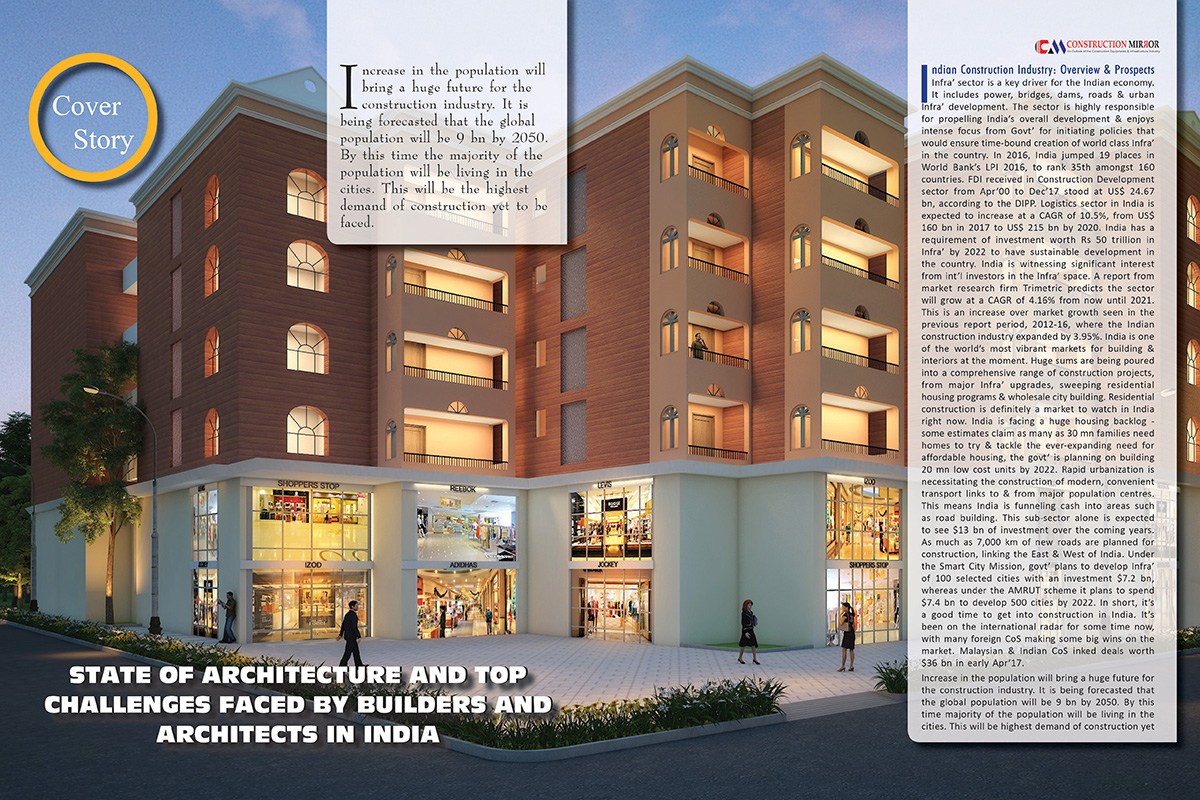


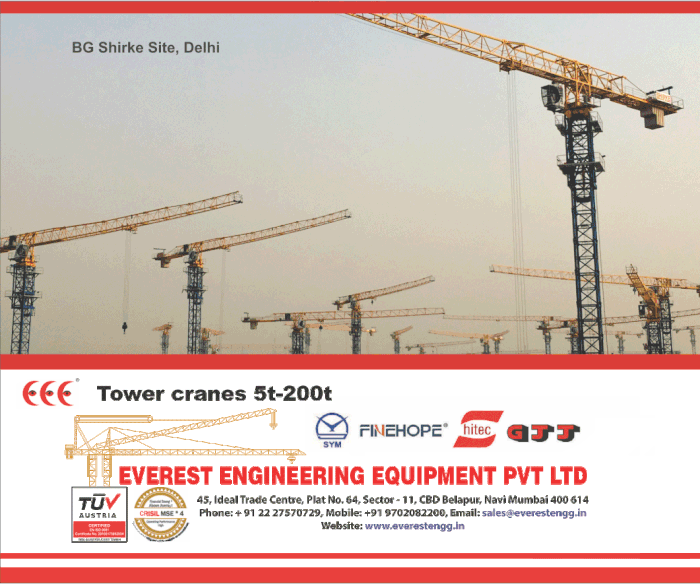
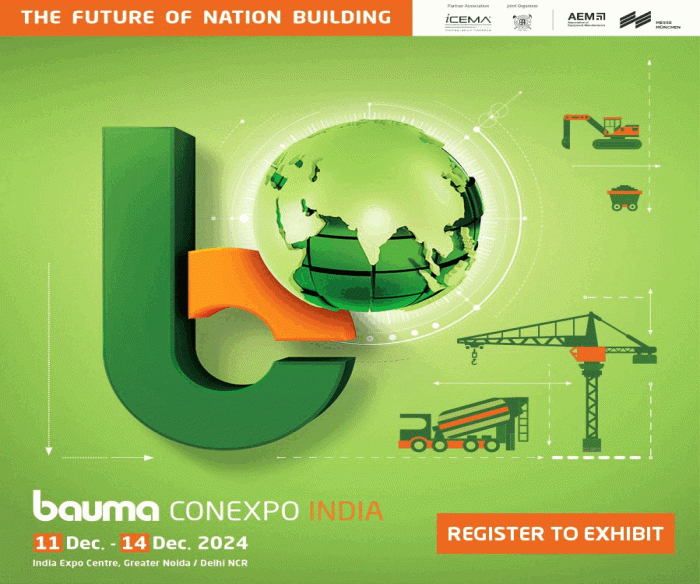

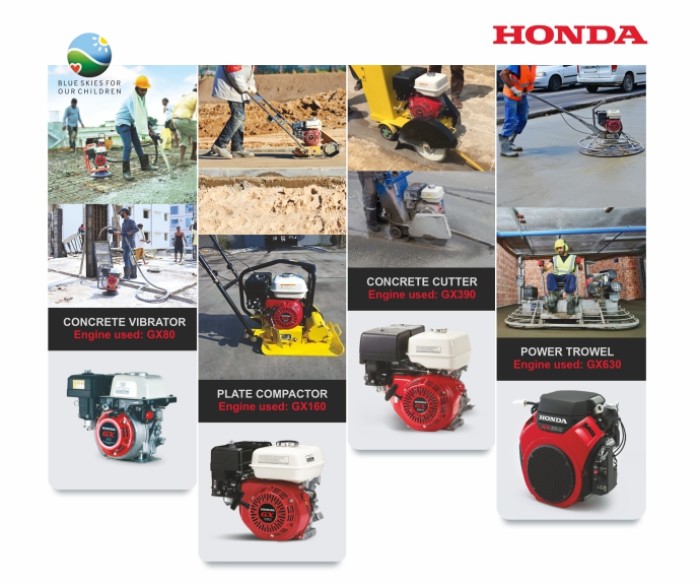
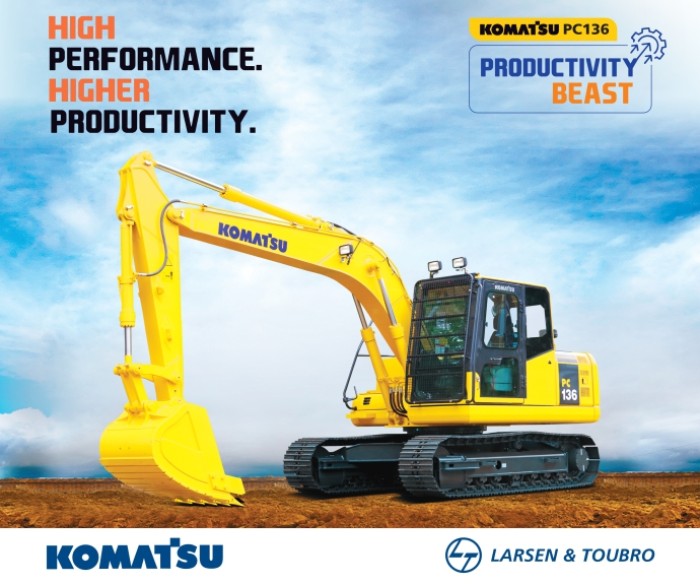


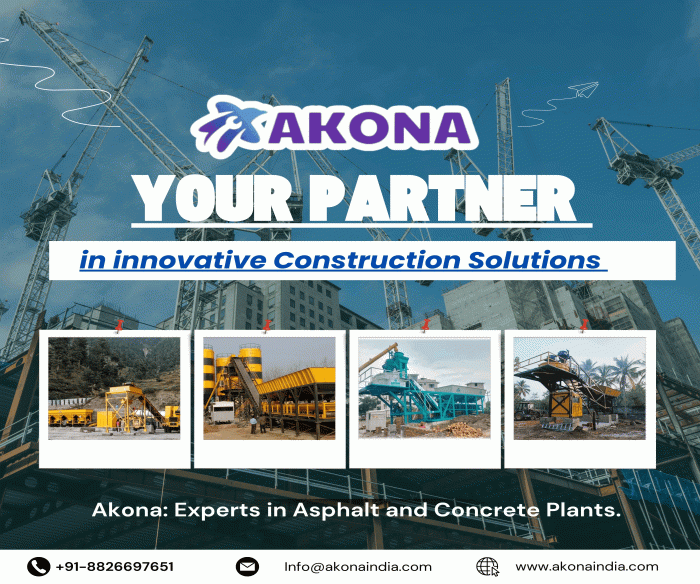
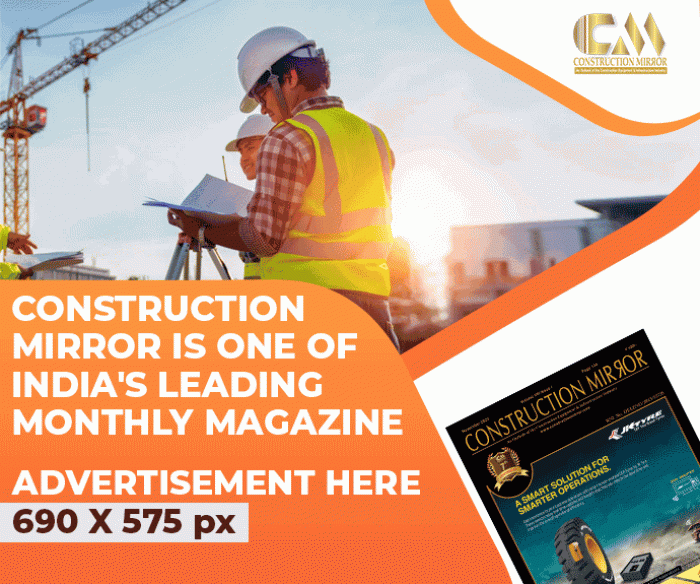

Leave a comment